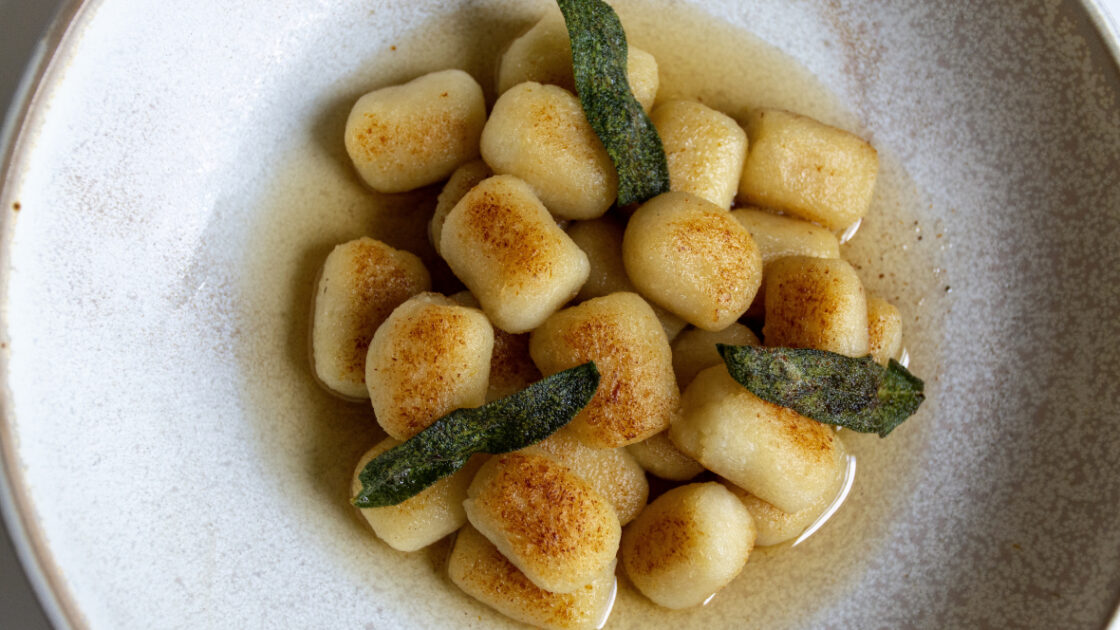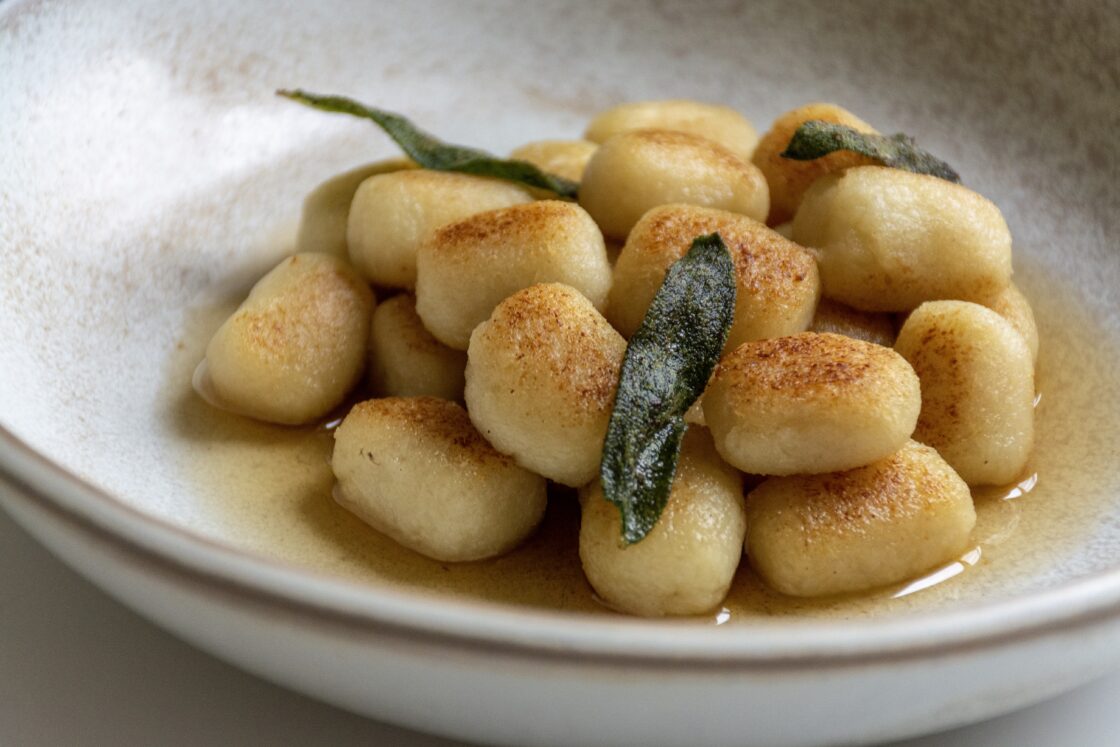How to Make Trader Joe’s Cauliflower Gnocchi From Scratch
Did your local Trader Joe's sell out again? Make it from scratch instead.

In January, Trader Joe’s, the popular nationwide chain known for selling private labeled at discount prices, released its 10th Annual Customer Choice Awards Winners. Customers voted across several categories including candy, condiment, beverage, and favorite overall.
When reviewing this list, it was a bit surprising to see a beloved product in the runner-up spot for favorite overall. Last year, it seemed like Trader Joe’s cauliflower gnocchi was all over social media. The gnocchi with a cult following had bloggers and influencers raving about this gluten-free, pillowy pasta. However, if you went to the store to pick some up, you might, more often then not, leave empty-handed.
What’s the deal?
Trader Joe’s locations get a limited amount of cauliflower gnocchi delivered each week, and they sell out fast. One location even had to limit customers to two bags per transaction and that was after customers had to ask an associate to retrieve them from the back. So the runner-up position for Trader Joe’s cauliflower gnocchi is likely due to fewer people getting a chance to try, and buy, because of its near impossibility to purchase.
A solution to the scarcity? A DIY version. This make-at-home cauliflower gnocchi is a replica of the Trader Joe’s product. Made with just a few ingredients, namely cauliflower, and allergen-friendly starches, this recipe allows the flexibility to have cauliflower gnocchi whenever you want.
Cauliflower
Though traditionally made with potatoes, the star of this gnocchi recipe is cauliflower. A cruciferous vegetable and cousin of broccoli, cauliflower contains phytonutrients and antioxidants believed to help with disease prevention. Rich in vitamin B6, C, and K as well as folate, manganese, and pantothenic acid, this versatile vegetable has been made into everything from buffalo ‘wings’, alfredo sauce, pizza crust and, today, gnocchi.
Cassava Flour
Made from grated cassava root, or yuca, cassava flour is a gluten-free, grain-free wheat alternative. Neutral in taste, cassava flour is unique in its lack of strong flavor or texture often found when using other gluten-free flours. The flour lends very well to a variety of baked goods in need of a denser texture such as bread, brownies, and even cookies. Extremely low in sodium, sugar, fat and, free from refined carbs, cassava flour is an excellent choice for those with health conditions like high cholesterol, high blood pressure and even, diabetes. Cassava root is grown in over 90 countries worldwide and can thrive in varying optimal to sub-optimal environmental conditions, making the crop highly sustainable.
Arrowroot Starch
Extracted from the tropical plant known as Maranta arundinacea, this incredibly versatile starchy substance has gained popularity due to its ability to replace cornstarch as a thickener. Similar to cassava flour in allergen-free and flavorless properties, arrowroot starch has also been found to add texture and structure to end products.

Ingredients
Preparation
Special Tools:
- Chop cauliflower into similarly sized florets and place into a steamer basket.
- Fill a pot with 1-2 inches of water, depending on size. Place the steamer basket into the pot, cover and set stove to high heat. Simmer for 10 minutes until florets are fork tender.
- With tongs or a slotted spoon, carefully place cauliflower in one layer on a cloth towel or cheesecloth to cool, between 5 to 10 minutes.
- While cauliflower cools, add cassava flour, arrowroot, and potato starch to a bowl. Set aside.
- After cauliflower has cooled, bring the towel or cheesecloth over the sink and squeeze as much moisture out of the vegetable as possible. Do not be afraid to press the cauliflower. Expect ½ cup, or more, of excess moisture to be extracted.
- Add cauliflower and salt to the food processor and begin to pulse. The mixture is done once smooth but not liquified.
- Add puréed cauliflower to the cassava flour, arrowroot, and potato starch bowl. Begin to incorporate ingredients until dough comes together. To test, grab a small quarter sized amount of dough and roll between palms. If the dough stays together, it’s ready. It should be slightly tacky in texture.
- To shape the gnocchi, divide the dough into 8 to 10 equal parts. With your hands, gently roll dough into 2-3 inch long logs, ½ to ¾ of an inch in thickness. Next, cut the log into ½ inch pieces. To achieve the traditional gnocchi ribbed pattern, roll each piece over the back of a fork or a gnocchi board.
Cooking Options:
Boiling: Bring water to boil and add salt. Add the gnocchi and cook until pieces float to the top, between 2-3 minutes. Transfer directly to the sauce of your choice.
Sauté (Preferred): To achieve crispy gnocchi, heat a nonstick pan over medium heat. Add cooking fat of choice (ghee or avocado oil, recommended). Place gnocchi in one layer with space between each piece. Do not overcrowd the pan. Sauté all sides until the desired crispiness. The color of gnocchi should be a mixture of golden brown and light brown. Garnish with table salt, herbs, and cheese of your choice.
Related on Organic Authority
Healthy Game Day Recipe: Cauliflower Hot Wings
3 Amazing Ways Cassava Flour Can Help You Eat Grain-Free
Arrowroot vs. Cornstarch: Which Thickener Is Best?

